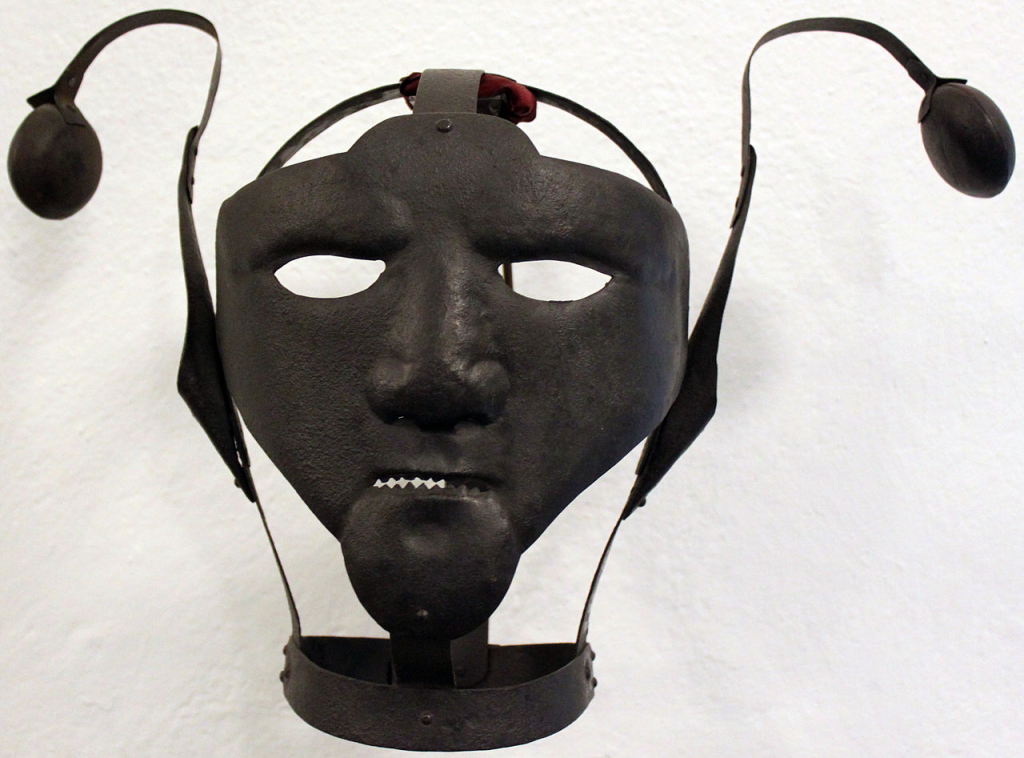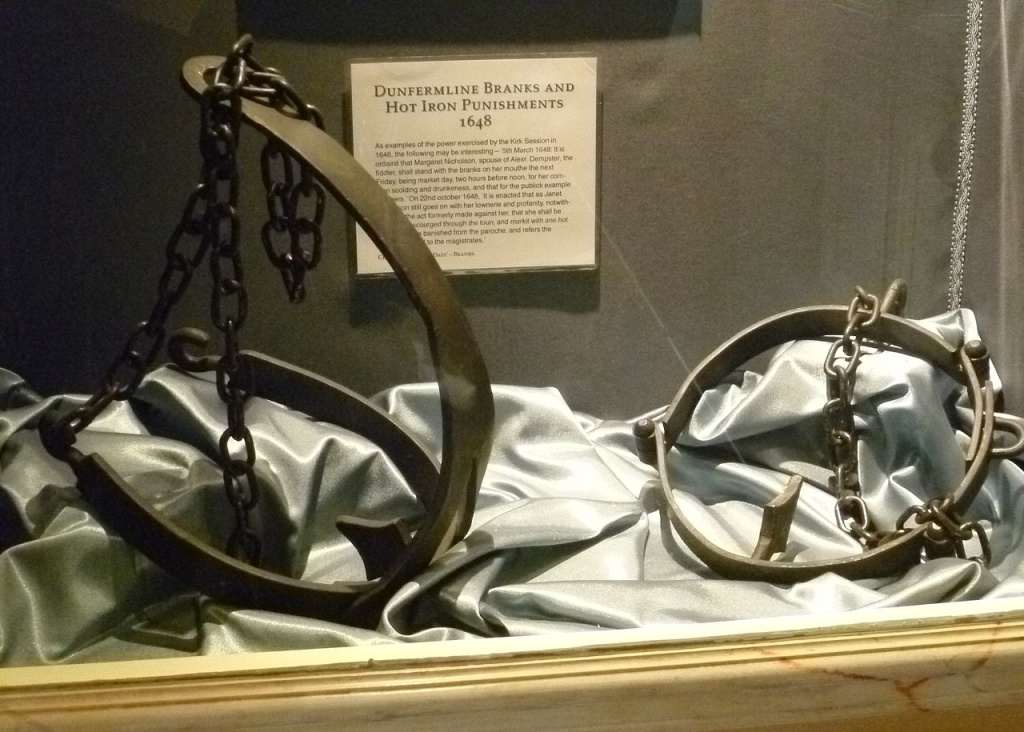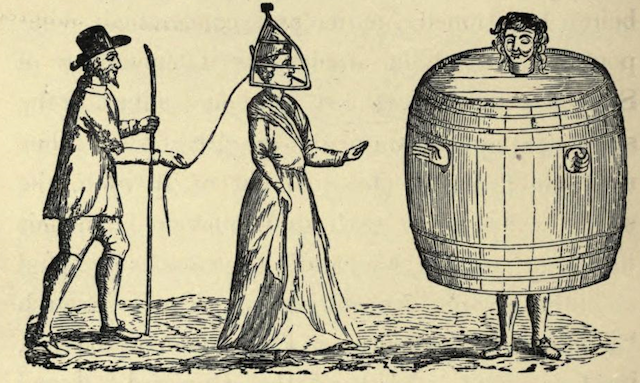In a time when silence was enforced with cruelty, the Scold’s Bridle emerged as a chilling symbol of repression and humiliation. From the 16th to the 19th century, women accused of being scolds, shrews, or having “loose morals” found themselves fitted with a gruesome device that held their tongues captive with an iron gag.
What is Scold’s Bridle?

The term “bridle” may commonly conjure images of horse equipment, but during this dark period, it had a human application. The Scold’s Bridle was an iron mask, equipped with a gag, intended for women who were accused of offenses such as gossiping, quarreling, or blasphemy. This device served a dual purpose: to stifle the voice of the accused and to publicly shame them. Those wearing a Scold’s Bridle were often paraded through towns, subjected to jeers and ridicule, emphasizing the oppressive nature of the punishment.
The Scold’s Bridle: Not the Sole Punishment
While the Scold’s Bridle is notorious, it was just one of many severe punishments for women who dared to speak out of turn. This article delves into its history and the broader context of repressive measures during the Middle Ages.
The Origins of a Scold’s Bridle
For centuries in the British Isles, the term “scold” referred to individuals, primarily women, who engaged in gossip, slander, loud disputes, or generally speaking out of turn. Local authorities, such as town councils and judges, resorted to the use of Scold’s Bridles to penalize these offenders.

These devices, varying in design, shared common traits of being iron masks, often described as “muzzles” or “cages for the head.” A lock at the back secured the bridle in place, and a metal gag silenced the wearer. Some gags were even spiked, causing injury if the wearer attempted to speak. The earliest reference to a device can be traced back to the 14th century, while documented cases of its use date to the 16th century.
The Cruel Application of Scold’s Bridles
The first documented use of a Scold’s Bridle, known as an iron brank, occurred in 1567 in Scotland and continued until 1856. In Edinburgh, laws permitted the use of iron branks for those accused of blasphemy or deemed immoral.
Throughout this period, the Scold’s Bridle was not exclusive to scolds; it was employed on “shrews” and women with “loose morals.” In 1789, a farmer in Lichfield used iron branks to silence a woman’s “clamorous Tongue,” subjecting her to humiliation as local children taunted her.
Beyond the Scold’s Bridle
However, the Scold’s Bridle was not the sole horrifying punishment for women accused of being scolds. In the 17th century, a Quaker named Dorothy Waugh was subjected to the iron branks for hours as a penalty for preaching in the market square. Although the punishment was severe, townspeople showed sympathy in this instance.

As the Victorian Era approached, the use of the device began to wane. In 1821, a judge ordered the destruction of an iron brank, declaring it a “relic of barbarism.” Many Victorians considered these devices old-fashioned and absurd. The last recorded use of a Scold’s Bridle occurred in 1856, marking the decline of this cruel practice.
Other Gruesome Punishments for Scolds
While the Scold’s Bridle was horrific, other punishments were equally humiliating and sometimes deadly. Cucking stools and ducking stools, often confused, were separate forms of punishment. Cucking stools involved tying women accused of being scolds to a chair, while ducking stools dunked them into water, often resulting in shock or drowning.
These punishments aimed to police moral behavior, shame women, and intimidate others into silence. The implied threat was clear: anyone could be the next victim.
Conclusion
The Scold’s Bridle stands as a haunting relic of a bygone era, symbolizing the extreme measures taken to silence women who dared to express themselves. While such devices have faded into history, the struggle for women’s voices to be heard continues. We must remember this dark chapter to appreciate the progress made in respecting individual freedom and expression.



